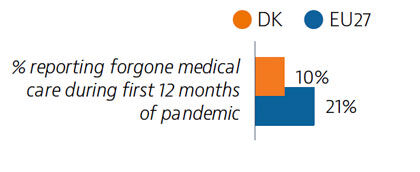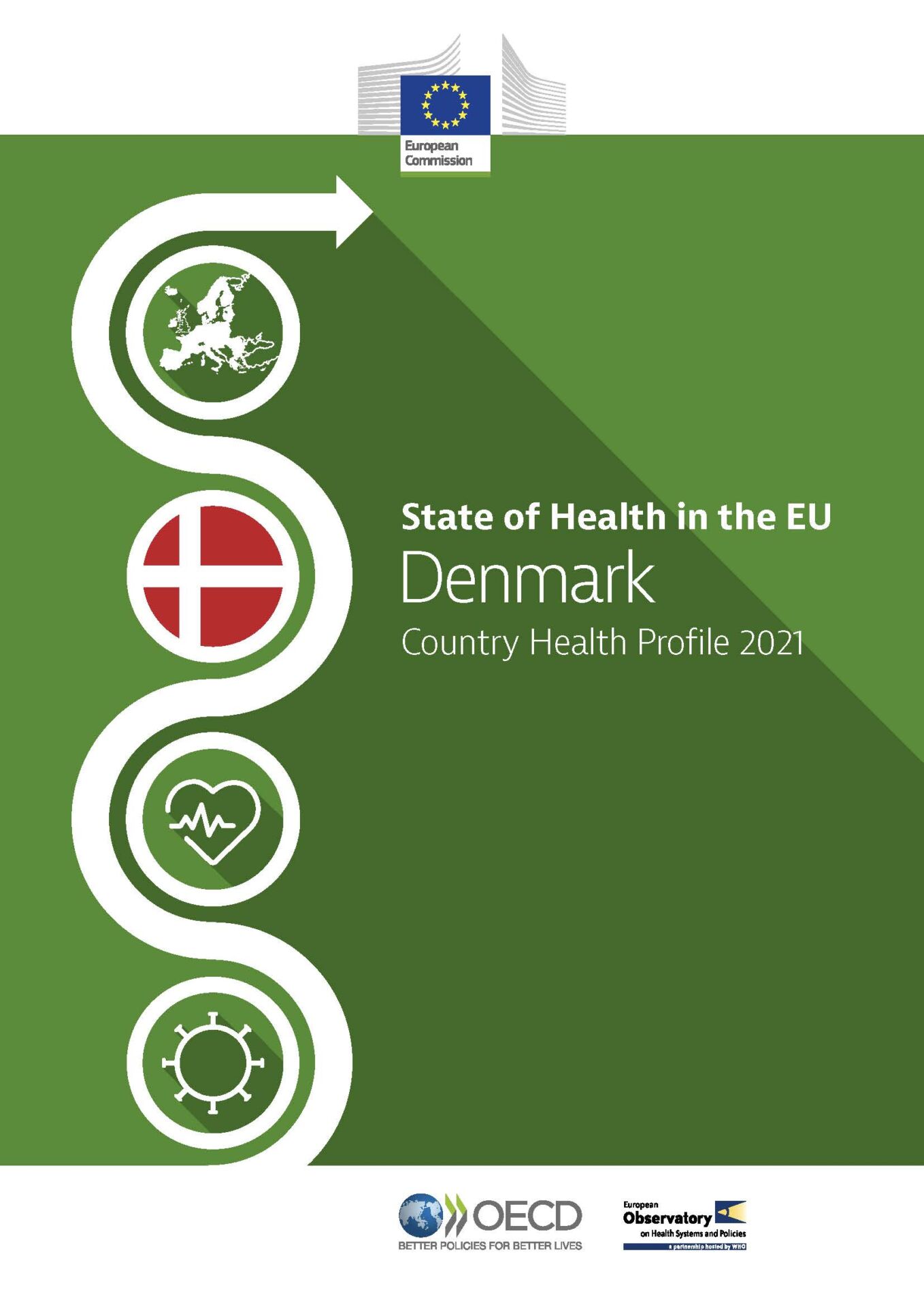Life expectancy in Denmark in 2020 was one year higher than the EU average, partly because the number of Covid-19 deaths was much lower than in most other EU countries. Denmark quickly scaled up its testing capacity at the beginning of the pandemic, which enabled effective detection, tracing and isolation of confirmed cases early on.
Rapid implementation of teleconsultations and lower than expected pressure on designated Covid-19 capacity ensured relatively low unmet needs during the pandemic.
Denmark’s health status
Life expectancy in Denmark has increased more rapidly than the EU average since 2010 and continued to grow at least slightly in 2020, while it fell significantly in most EU countries because of Covid-19. Seven in 10 Danes report being in good health, which is similar to the EU average. However, non-negligible socioeconomic differences in health status persist.

Risk factors
Smoking rates among both adults and adolescents have reduced sharply over the past two decades, and are now below the EU average. However, adolescents in Denmark drink more alcohol than their Nordic and EU peers. High rates of physical inactivity among adolescents are becoming an important public health issue.

Denmark’s health system
Spending on health in Denmark has remained slightly above the EU average over the past decade. Health expenditure grew at an average rate of 2% per year in real terms between 2015 and 2019 – slightly slower than the EU average. As a result of the Covid-19 pandemic, public spending on health increased by over 5% in 2020, while GDP fell by more than 2%, temporarily increasing the health spending share of GDP.

Effectiveness
Mortality rates from preventable causes in Denmark in 2018 were close to the EU average. Lung cancer is the leading cause of preventable death – a legacy of high smoking rates among previous generations. Mortality rates from treatable causes are below the EU average, although higher than in Sweden and Norway.

Accessibility
Danes reported low levels of unmet needs before the pandemic. During the first 12 months of the pandemic, levels of unmet needs were also lower than the EU average. Rapid expansion of telehealth ensured continuity of ambulatory care, but non-essential and elective care were delayed during the peaks of the first and second waves to free up hospital capacity for Covid-19 patients.

Resilience
Up to the end of August 2021, Denmark experienced 3.5-times fewer Covid-19 deaths relative to its population size than the EU average, although the Covid-19 death rate was higher than in Finland and Norway. As of the end of August 2021, 72% of the Danish population had received two doses of the Covid-19 vaccine or equivalent – a proportion higher than the EU average.

OECD/European Observatory on Health Systems and Policies (2021), Denmark: Country Health Profile 2021, State of Health in the EU, OECD Publishing, Paris/European Observatory on Health Systems and Policies, Brussels.











